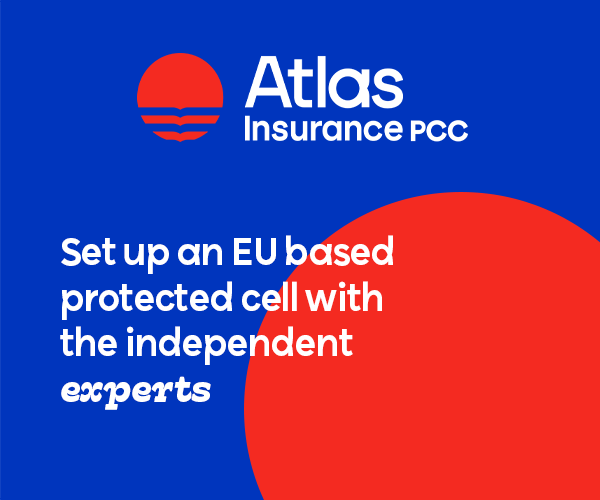In the second instalment of a two-part feature on captive health insurance in the US, Diana Bui explores how this model can improve healthcare coverage by managing high-cost claims, increasing policy flexibility, and promoting health equity within organisations
Saving the budget
Employers are increasingly challenged by the financial impact of high-cost medical claims, particularly those associated with specialty medications and advanced therapies. Drugs such as GLP-1 receptor agonists, used for diabetes management and weight loss, alongside emerging cell and gene therapies (CGTs), present significant cost considerations.
Jeb Dunkelberger, CEO of ClearPoint Health, acknowledges the dual nature of GLP-1 medications: "The surge in high-cost claimants and GLP-1 prescriptions — now at around two million — adds to employers' rising healthcare costs. However, by addressing obesity-related issues like type 2 diabetes, these drugs have the potential to reduce the frequency and severity of costly complications."
In response, many employers are turning to captives, especially group captives, as a strategic solution to manage these expenses. In the latest model, multiple companies collaborate to form their own insurance entity, sharing risks and resources. By participating in group captives, employers can customise premiums to match their specific risk profiles, providing the flexibility to adapt to market trends, such as the increasing use of weight-loss medications and the anticipated growth in CGTs.
Dunkelberger notes: "In a captive, premiums are tailored to employer members' individual risk profiles, providing flexibility to adapt to market shifts like the surge in weight loss drugs or advancements in CGTs — a trend expected to shape the market, with an estimated 50 to 75 CGTs projected for regulatory approval by 2030."
The collaborative nature of group captives allows employers to collectively manage these financial risks. Dunkelberger goes on to explain that the random distribution of this risk makes it perfect for individual employers who collaborate to share the risk.
Meanwhile, Phillip C. Giles, chief growth officer in Accident & Health at Skyward Specialty, emphasises the importance of effective management of specialty pharmaceuticals within selffunded plans.
He states: "The expanded use of high-cost specialty pharmaceuticals and the continuous approval of new CGTs have been among the top claim drivers for self-funded plans. Controlling the use and administration of specialty pharmaceuticals and just about anything infusion-related, particularly in a clinical setting, will always be at the top of the priority list."
"Giles highlights the cost disparity in GLP-1 medications, noting that while these drugs can exceed US$1,500 per month in the US, international sources may offer them at approximately US$150 per month. He suggests that self-funded employers, especially those in progressive group captives, have greater flexibility in defining benefit coverage and exploring cost-saving alternatives, such as sourcing medications internationally or opting for biosimilars.
Regarding CGTs, Giles points out that self-funded employers often manage exposure to these high-cost treatments by setting coverage limitations or exclusions within their plans. He notes that while some stop-loss carriers and reinsurers provide CGT coverage or carve-out options, availability remains limited. Group captives, depending on their size, might consider securing reinsurance independently to address these risks.
Geoff Christian, employee benefits captive leader at AssuredPartners, underscores the importance of control and flexibility for captive members. He states: ""Employers participating in an employee benefits captive have an entrepreneurial spirit; at the heart of every successful member is 'let’s find a way!'
“Employers understand that using programmes that help work with the member’s physicians to guide them through step therapy and ultimately getting them to the most effective drug at the right price is key to their success."
Adding to this point, Kathryn Simmons, vice president of operations at AssuredPartners, cites the Keenan Pharmacy Coalition programme at AssuredPartners as an example of such an initiative. It is a prescription drug purchasing pool that offers self-funded groups access to discounted pricing by leveraging collective purchasing power. Simmons says: “Our employers are seeing results in their claims spent with top-notch rebate reimbursement on all brand drugs. This pharmacy coalition is a true partnership that finds a way to take care of their members.”
Addressing diverse needs
Unlike traditional insurance plans that offer limited customisation, captives enable employers to design healthcare policies tailored to their workforce's specific needs. This flexibility is particularly beneficial for small and medium-sized enterprises (SMEs), which often struggle to find affordable, comprehensive coverage in the conventional insurance market.
Giles explains: "Self-insured employers have nearly complete flexibility to tailor coverage terms that best match their employee demographics and benefit objectives. Captives — particularly group captives — make it more feasible for SMEs to convert from a fully insured plan to a self-funded plan, allowing them to assume more control in reducing costs."
By joining group captives, SMEs can collaborate with other businesses to share risks, leading to more stable insurance costs and the ability to customise coverage according to their specific needs. Captive programmes generate detailed claims data specific to each business's risk profile, which can be analysed to identify patterns, trends, and opportunities for improvement.
Anne Marie Towle, CEO of Hylant Global Captive Solutions, says "Captives can incorporate various cost-containment strategies related to care management, therapies, and pharmacy initiatives. By focusing on early intervention and ongoing support, employers can improve health outcomes and reduce long-term costs."
In addition to offering tailored benefits, captives provide greater transparency in healthcare spending. Members gain access to detailed claims data, enabling them to identify cost drivers and implement targeted interventions — a level of insight rarely available in traditional insurance plans.
"Transparency is crucial for effective cost management," Towle adds. "Captives provide employers with detailed insights into their claims experience, utilisation patterns, and cost drivers. This information empowers them to make data-driven decisions about plan design and provider networks."
In this regard, Dunkelberger highlights an additional benefit: "Unlike a traditional plan, employers enrolled in a captive have the potential to receive their unused premium back in the form of a dividend. These dividends can be used for other applicable expenses, like voluntary benefits — hospital indemnity, short- and long-term disability, and others."
Moreover, captives provide employers with the flexibility to supplement standard healthcare benefits with initiatives such as step count competitions, behavioural health assessments, and other programmes that encourage proactive health management. Dunkelberger notes that by promoting such initiatives, "these programmes can reduce potential future medical costs and further the underwriting surplus of the captive."
Simmons emphasises the importance of data analytics in this context: "Through the power of data analytics, we are able to help pinpoint best outcomes and work with members to drive care where it is best for them and ultimately their bottom line."
She explains that captives aim to control fixed costs by collectively purchasing reinsurance at more favorable rates and implementing targeted solutions that impact claim expenses. Simmons points out that directing employees to providers with superior outcomes, even at a slightly higher initial cost, can lead to long-term savings.
Bridging the gap
Organisations are increasingly recognising the potential of captive insurance models to advance health equity.
By allowing employers to design inclusive healthcare policies, captives address disparities in access to care, ensuring that all employees receive quality health services tailored to their diverse needs.
Jeff Levin-Scherz, population health leader at WTW, notes: “Employers should be thinking about health equity whenever they are making plan design decisions. Plan benefit design should be inclusive, offering the care needed by communities that have been minoritised or have faced past discrimination.”
He gives examples such as having a network that includes diverse providers, offering fertility benefits that are valuable to both traditional and non-traditional families, and providing robust mental health services.
Meanwhile, Giles points out that health disparities often arise from systemic issues within the healthcare system, including access to care and affordability. In this context, captives allow employers to address these disparities by offering benefits that are sensitive to the socioeconomic and cultural needs of their employees.
In addition, experts highlight that employee education is essential for maximising the benefits of a captive. When employees understand how their choices impact their health and the company's healthcare costs, they are more likely to participate in preventive care, adhere to treatment plans, and utilise costeffective services. Giles emphasises: "Educating employees about their health benefits and the importance of preventive care can lead to significant reductions in healthcare costs and improved health outcomes."
Echoing this perspective, Christian notes that well-communicated benefits programmes are more valued by employees, regardless of plan design. "We encourage employers to utilise a variety of education and communication methods," Simmons says. "These can include videos, easy-to-understand benefit guides, and oneon-one meetings where necessary."
The evolution of medical stop-loss captives has further enhanced their role in promoting health equity. Giles observes that these captives have progressed through several generations, each adopting more advanced risk control and cost-containment strategies. "The newer generation of captives continues to evolve from earlier generations through AI underwriting to augment risk analysis and by providing a platform of risk reduction and cost-control initiatives from bestin-class solution specialists," he explains.
He notes that offerings such as reference-based pricing (RBP) and direct provider contracting, centres of excellence (COE) networks for complex medical conditions, specialty pharmaceutical management, retrospective claim review, and repricing now represent the minimum bar of entry for captive platforms.
“More progressive captives are incorporating elements such as sophisticated data analytics and predictive modeling. The current generation has progressed tremendously in the level of innovative sophistication that is available and the increased ability to reduce risk. Responding to large claims after they happen is one thing, but captives are now starting to integrate the necessary technology to identify and mitigate medical claim risk before it happens.”
Simmons shares an optimistic outlook on the future of employee benefit captives, stating: “As the healthcare industry evolves with technology, we will be able to bring about easier, more predictive underwriting. Every captive manager’s goal is to have predictable, accurate, and timely actionable data.”
Sharing the same opinion, Christian stresses: “Imagine a world where you can predict within a company population to a higher degree of accuracy the number of knee replacements, breast cancer patients, and more.”
He adds: “This knowledge is going to allow employers to spend less time gathering information for underwriting and spend more time on educating their team members on various point solutions that may very well improve their outcomes and save their lives. This will be an industry game changer.”
Discussing trends in the healthcare sector, Dunkelberger anticipates a shift away from adverse risk retention captives. He explains that such models, where all employer members qualify for the same rate cap regardless of risk, can lead to unsustainable practices by incentivising bad risks to remain captive and driving good risks away. To combat this trend, he suggests the use of proprietary methods, such as the member engagement index (MEI), which ties employer behavior to renewal rates, the distribution of underwriting surpluses, and contractual terms. This equitable model considers employer engagement in proactive programmes and addresses avoidable risks, ultimately impacting the total cost of care and subsequent premiums.
Looking ahead, Dunkelberger says: "We also predict that the most progressive captives will move into positions that impact the unit cost of care and the utilisation trends around care delivery." As the healthcare industry evolves, captives are set to play an important role in shaping the future of risk management, particularly in addressing rising costs and health inequalities.





